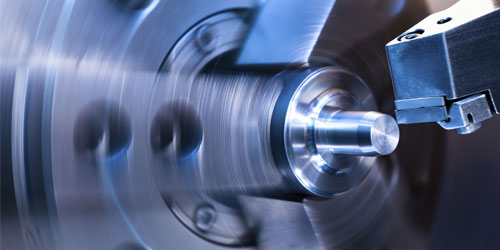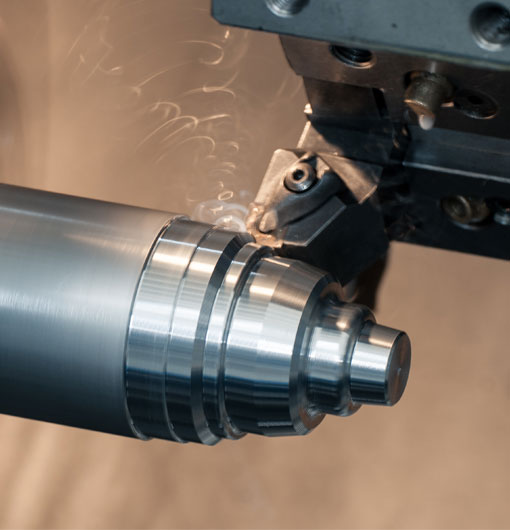Introduction
Computer Numerical Control (CNC) machinery has revolutionized the manufacturing industry, allowing for precise and efficient machining operations. One essential aspect of this technology is G-code programming, which serves as the backbone for controlling CNC machines. This blog will dive deep into CNC G-code programming for turning operations, providing insightful tips and techniques for both beginners and experienced operators alike.
What is G-Code Programming?
G-code, also known as RS-274, is a set of standard instructions used to program and control CNC machines. It consists of command sequences that instruct the machine on how to perform different machining operations, such as cutting, drilling, and turning. G-code programming is vital to ensuring accuracy and repeatability in CNC machining processes.
Understanding Turning Operations
Before we discuss G-code programming for turning operations, it's important to understand the concept of turning on a CNC lathe. Turning is a material-removing process wherein a cutting tool moves along a rotating workpiece, shaving off layers of material to achieve the desired shape. There are various turning techniques, including:
1. Straight turning
2. Taper turning
3. Profile turning
4. Grooving
5. Threading
6. Parting off
G-Code Programming for Turning Operations
To master G-code programming for turning operations, you need to understand the fundamental commands that are specific to turning processes. Here are some crucial G-code commands used in turning operations:
G00– Rapid Positioning: Used to move the cutting tool to the starting point at the maximum allowable speed.
G01– Linear Interpolation: Facilitates straight line cutting.
G02– Circular/Helical Interpolation (Clockwise): Enables clockwise arc cutting.
G03– Circular/Helical Interpolation (Counterclockwise): Enables counter-clockwise arc cutting.
G20 / G21– Unit Selection: Determines whether the machine uses inches (G20) or millimeters (G21).
G28– Return to Home Position: Commands the machine to return to the programmed home position.
G40 / G41 / G42– Cutter Radius Compensation: Adjusts for cutter size, which is essential in maintaining precise dimensions.
Tips for Programming Turning Operations
While understanding G-code commands is crucial, there are additional factors to consider when programming CNC turning operations:
1. Tool Selection:Choose the appropriate cutting tools based on material type, finish requirements, and machining constraints.
2. Feeds and Speeds:Optimize cutting speed and feed rate to maximize efficiency and accuracy while minimizing tool wear.
3. Coolant Usage:Adjust the flow rate and direction of coolant to ensure effective heat management in the cutting area.
4. Tool Path Entry/Exit:Choose the best strategy for tool entry and exit to promote smooth cutting and prevent tool deflection.
5. Safe Practices:Always double-check your G-code program and follow best practices for machine operation.
Learning Resources and Tools
Developing a strong foundation in G-code programming for turning operations requires continuous learning and practice. Here are some helpful resources and tools to help you master G-code programming:
1. CNC Programming Manuals:Consult your CNC machine manufacturer's programming manual to learn about specific machine commands.
2. Simulation Software:Utilize simulation software, such as Fusion 360 or Mastercam, to test and verify your G-code programs before running them on the machine.
3. Online Forums and Communities:Engage in online forums and communities to ask questions, share insights, and learn from other CNC programming professionals.
Advanced Concepts in Turning Operations
Beyond the basics, there are advanced G-code programming concepts that can help optimize your turning operations:
1. Macro Programming:Utilize custom macros for complex operations that require parameterization, conditional branching, and repetitive sequences.
2. Subprogramming and Canned Cycles:Simplify complex operations and reduce programming time with subprograms and canned cycles.
3. Adaptive Tool Paths:Implement adaptive tool path strategies that automatically adjust cutting parameters based on real-time feedback from the machine.
In summary, mastering CNC G-code programming for turning operations is critical to ensuring accurate and efficient machining. The tips and techniques mentioned in this blog should provide a solid starting point for developing your programming skills. Don't forget to consult your machine manual, engage in online communities, and leverage simulation software to learn as much as possible. Keep practicing, and you'll soon be able to produce high-quality turning operations in no time.
cnc g code programming for turning













